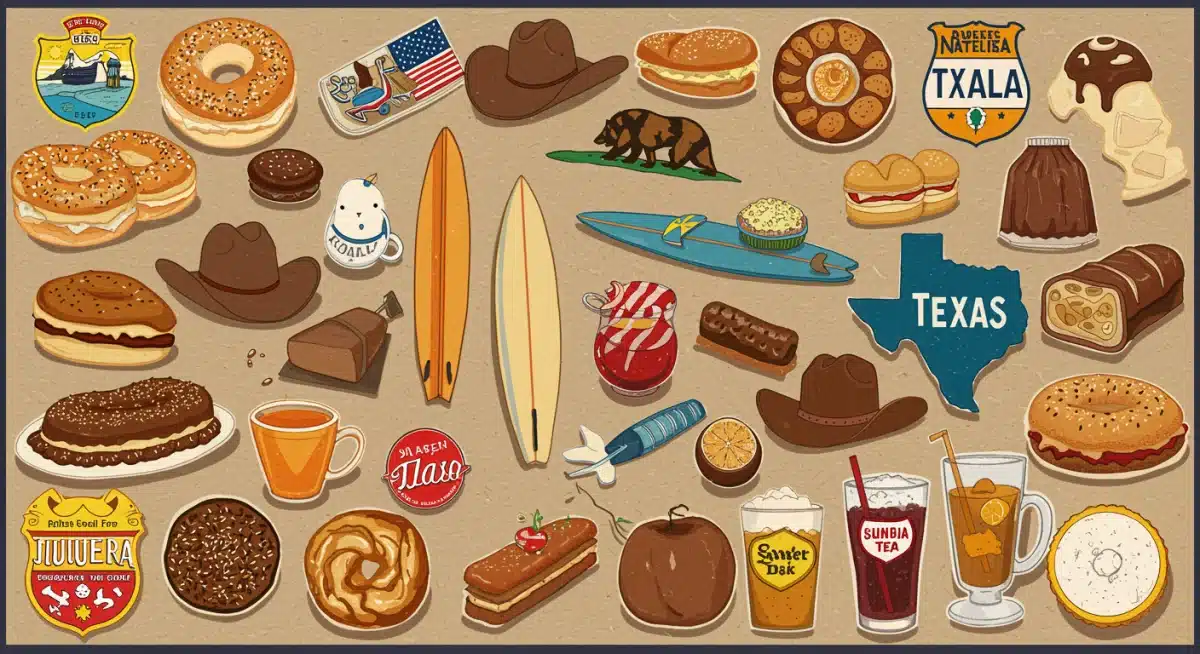Decoding American Traditions: 5 Key Cultural Nuances for 2025 Travelers

For those planning to visit the United States in 2025, understanding the intricate layers of Decoding American Traditions is more vital than ever. The U.S. presents a rich tapestry of customs and social norms that can surprise even experienced global travelers.
Direct Communication and Personal Space
American communication styles often lean towards directness, a nuance that frequently surprises international visitors. This straightforward approach is typically not intended as rudeness but rather as a cultural preference for clarity and efficiency in conversation. Understanding this can significantly ease social interactions and business dealings.
Furthermore, the concept of personal space is a significant cultural aspect. Americans generally maintain a greater physical distance during conversations compared to many other cultures. Invading this space unintentionally can lead to discomfort, so observing and respecting these unwritten rules is key to smooth interactions.
Understanding Verbal Cues
Verbal communication in the U.S. often prioritizes explicit statements over implied meanings. While sarcasm and irony are present, direct questions and answers are the norm in most formal and many informal settings. This means that a ‘yes’ usually means ‘yes,’ and a ‘no’ is typically unambiguous.
- Clarity: Americans value clear, concise language in most interactions.
- Honesty: Direct feedback is often seen as a sign of respect and efficiency.
- Active Listening: Engage by asking questions and providing verbal affirmations.
Navigating Non-Verbal Signals
Beyond words, non-verbal cues also play a role. Eye contact, for instance, is generally expected and signals attentiveness and sincerity. However, prolonged, unbroken eye contact can sometimes be perceived as aggressive. A balanced approach is usually best.
Gestures are also commonly used, but their meaning can vary. A thumbs-up is generally positive, while other gestures might have regional or contextual interpretations. When in doubt, observing locals is a good strategy.
Tipping Etiquette and Service Culture
Tipping is a deeply ingrained American tradition, particularly within the service industry. Unlike many countries where a service charge might be included or tips are discretionary, in the U.S., tips form a significant portion of many service workers’ income. This expectation extends to a wide range of services, from dining to transportation and personal care.
The service culture itself is often characterized by an emphasis on customer satisfaction. Service providers are typically trained to be attentive, friendly, and efficient, aiming to enhance the customer experience. This high level of service often correlates directly with the expectation of a tip.
Standard Tipping Guidelines
For most restaurant services, a tip of 15% to 20% of the pre-tax bill is standard, with 18% often considered average for good service. For exceptional service, tipping more is appreciated. In bars, $1-$2 per drink is common. Other services, such as taxi drivers, hotel bellhops, and hairdressers, also have typical tipping ranges.
- Restaurants: 15-20% of the bill.
- Bars: $1-$2 per drink.
- Taxi/Ride-share: 15% of the fare.
- Hotel Staff (Bellhops/Housekeeping): $1-$5 per bag/day.
The ‘Customer is Always Right’ Mentality
This phrase, while not universally true, reflects a strong cultural emphasis on customer satisfaction. Businesses often go to great lengths to resolve issues and ensure a positive experience. This approach often leads to a more accommodating and flexible service environment, which travelers can appreciate, but also implies an expectation for appropriate tipping in return for good service.
Regional Diversity and Local Customs
The United States is a vast country, and its cultural landscape is far from monolithic. What might be considered a norm in one region could be entirely different in another. This regional diversity is a crucial aspect of Decoding American Traditions and impacts everything from dialect and cuisine to social customs and political views. Travelers who acknowledge and appreciate these local nuances will have a much richer and more authentic experience.
For example, the pace of life in New York City differs dramatically from that in a small town in the Midwest or the laid-back atmosphere of coastal California. Each region boasts its own unique history, demographics, and traditions that shape its residents’ daily lives and interactions.

The South: Hospitality and Tradition
The Southern states are renowned for their hospitality, often referred to as ‘Southern charm.’ This includes a slower pace of conversation, an emphasis on politeness, and a strong sense of community. Traditional Southern cuisine, like barbecue and soul food, also plays a significant role in social gatherings.
- Manners: Politeness and formal address are highly valued.
- Pace: Life often moves at a more relaxed speed.
- Community: Strong ties to family and local community.
The Northeast: Fast-Paced and Direct
In contrast, the Northeast, particularly major cities like Boston and New York, is often characterized by its fast pace and direct communication. Efficiency is highly valued, and interactions can be brisk. This region also boasts a rich history and strong intellectual traditions, influencing its cultural landscape.
Understanding these variations helps travelers avoid misinterpretations and fully immerse themselves in the local flavor. From regional accents to different holiday celebrations, the U.S. offers a spectrum of experiences within its borders.
Punctuality and Time Perception
In American culture, punctuality is generally highly valued and considered a sign of respect and professionalism. This applies to both social engagements and business appointments. Arriving on time, or even a few minutes early, is often expected, and being late without prior notice can be perceived negatively.
The perception of time in the U.S. is often linear and highly structured. Schedules, deadlines, and appointments are typically taken seriously, and deviations are generally seen as disruptive. This cultural norm is an important aspect of Decoding American Traditions for visitors, as it impacts everything from meeting friends to attending events.
‘Time is Money’ Mentality
The adage ‘time is money’ accurately reflects the American approach to efficiency and productivity. This mindset influences how meetings are conducted, how services are delivered, and even how leisure time is planned. Wastage of time is often viewed unfavorably.
- Appointments: Arrive on time, if not a few minutes early.
- Social Gatherings: Aim to be prompt, or communicate if running late.
- Deadlines: Taken seriously in professional and academic settings.
Flexibility vs. Strict Adherence
While punctuality is generally expected, there can be some flexibility in very informal social settings, such as casual gatherings among close friends. However, for any formal or semi-formal event, adhering to the scheduled time is crucial. Always err on the side of being on time if unsure.
Many Americans plan their days and weeks meticulously, often scheduling multiple activities. Therefore, unexpected delays or last-minute changes can disrupt their carefully organized routines. Communicating any potential delays well in advance is always a good practice.
Individualism vs. Collectivism
American culture is often characterized by a strong emphasis on individualism. This means that personal achievement, self-reliance, and individual rights are highly valued. People are generally encouraged to think for themselves, pursue their own goals, and express their opinions freely. This contrasts with more collectivist cultures where group harmony and interdependence are prioritized.
Understanding this fundamental cultural underpinning is crucial for Decoding American Traditions. It influences various aspects of life, from educational approaches to workplace dynamics and even social interactions, shaping expectations around personal responsibility and autonomy.
Self-Reliance and Personal Achievement
From a young age, Americans are often taught the importance of standing on their own two feet and striving for individual success. This can manifest in competitive environments, an emphasis on personal accomplishments, and a belief that hard work leads to upward mobility.
- Independence: Valued in decision-making and personal life.
- Self-expression: Openness in sharing personal views and opinions.
- Privacy: A strong emphasis on personal space and individual boundaries.
Impact on Social Interactions
In social settings, this individualism can mean that people might be less inclined to offer unsolicited help or advice, respecting others’ autonomy. While friendly and open, relationships often build on shared interests rather than a deep, immediate interdependence. Additionally, personal accomplishments are often celebrated openly.
This focus on the individual also extends to personal responsibility. Individuals are often expected to take ownership of their actions and outcomes. This cultural trait can be a significant point of difference for travelers coming from more collectivist societies, influencing how they perceive social obligations and personal freedoms.
| Key Aspect | Brief Description |
|---|---|
| Direct Communication | Americans often prefer clear, explicit language, valuing efficiency over indirectness in conversations. |
| Tipping Etiquette | Tipping 15-20% for service staff is standard and constitutes a significant part of their income. |
| Regional Diversity | Cultural norms, dialects, and customs vary significantly across different U.S. regions. |
| Punctuality | Being on time for appointments and social engagements is highly valued and expected. |
Frequently Asked Questions About American Traditions
Direct communication in the U.S. is often favored for its efficiency and clarity. It minimizes misunderstandings by stating intentions and information explicitly, which is generally seen as a respectful and productive approach in both personal and professional settings.
The standard tipping percentage in American restaurants ranges from 15% to 20% of the pre-tax bill. This amount is considered essential for service staff, as a significant portion of their income often comes from tips, reflecting the service-oriented culture.
Regional diversity profoundly impacts American culture by creating distinct variations in customs, dialects, cuisine, and social norms across the country. This means that cultural expectations in the Northeast can differ significantly from those in the South or West, enriching the overall national tapestry.
Yes, punctuality is generally strictly observed in American social settings, particularly for formal or semi-formal engagements. Arriving on time or even slightly early is considered a sign of respect. While very casual gatherings might offer some flexibility, it’s always best to be prompt.
Individualism is a core American value, emphasizing self-reliance, personal achievement, and individual rights. It shapes social interactions, educational systems, and workplace dynamics, encouraging personal expression and the pursuit of individual goals over collective harmony, though community remains important.
Looking Ahead: Navigating Evolving American Traditions
As of late 2024, these cultural nuances remain central to understanding the U.S. landscape for 2025 travelers. However, American traditions are dynamic, continually evolving with new generations and global influences. Travelers should anticipate subtle shifts, particularly in communication through digital platforms and evolving social etiquette in diverse urban centers. Staying informed and approaching interactions with an open mind will continue to be key for a seamless and rewarding American experience, reflecting the nation’s ongoing cultural development.